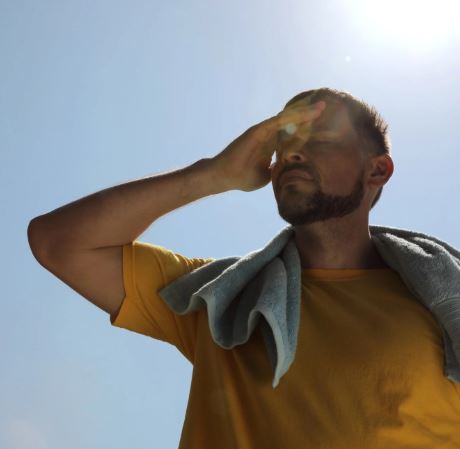Heat-related illnesses, including heat exhaustion and heatstroke, pose serious risks, especially during hot and humid conditions. Understanding how to prevent, recognize, and treat these conditions is essential for anyone who spends time outdoors or participates in physical activities. We consulted Dr. Jason Pirozzolo, a leading expert in sports medicine, for advice on navigating the dangers of heat-related illnesses.
“Heat-related illnesses occur when the body’s ability to cool itself is overwhelmed,” explains Dr. Jason Pirozzolo. “Sweating is the body’s natural cooling mechanism, but in extreme heat or with high-intensity activities, this process can fail, leading to dangerous outcomes.”
Most importantly, heat exhaustion is the early stage of heat-related illness. Symptoms include heavy sweating, weakness, dizziness, nausea, and muscle cramps. If left untreated, it can progress to heatstroke, which is a life-threatening condition characterized by a body temperature exceeding 104°F, confusion, rapid pulse, and even loss of consciousness. Dr. Jason Pirozzolo stresses that heatstroke is a medical emergency requiring immediate intervention. “Prompt recognition and treatment are critical to prevent permanent damage or death.”
Prevention is the best strategy for avoiding heat-related illnesses. Staying hydrated is paramount. “Dehydration accelerates the onset of heat exhaustion,” notes Dr. Jason Pirozzolo. Drinking water regularly, even if you don’t feel thirsty, can help maintain fluid balance. Besides that, wearing lightweight, breathable clothing and taking frequent breaks in shaded or air-conditioned areas can reduce the risk.
When it comes to treatment, the approach depends on the severity of the condition. For heat exhaustion, cooling the body is the priority. Move to a shaded or cool environment, remove excess clothing, and apply cold packs or wet towels to the skin. Rehydration with water or electrolyte-containing beverages is also crucial. “Rehydrating with electrolytes is particularly important after heavy sweating,” says Dr. Jason Pirozzolo.
However, heatstroke requires immediate medical attention. While waiting for emergency responders, begin cooling measures such as applying ice packs to the neck, armpits, and groin. Avoid giving fluids if the person is unconscious or unable to swallow. “Time is of the essence with heatstroke,” emphasizes Dr. Jason Pirozzolo. “Delaying treatment can lead to severe complications, including organ damage.”
For those who work or exercise outdoors, Dr. Jason Pirozzolo offers these practical tips:
- Plan activities during cooler parts of the day, such as early morning or late evening.
- Use sunscreen, as sunburn reduces the skin’s ability to cool itself.
- Acclimate gradually to hot conditions by increasing exposure over a week or more.
Technology can also play a role in prevention. Wearable devices that monitor body temperature, hydration levels, and heart rate are becoming increasingly accessible. These tools can alert users to early signs of heat stress, helping them take preventive action. “Technology is changing the way we approach health and safety in extreme conditions,” says Dr. Jason Pirozzolo.
Certain groups, such as young children, older adults, and those with chronic illnesses, are at higher risk for heat-related illnesses. It’s essential to monitor these individuals closely during hot weather. Most importantly, everyone should know the warning signs and act quickly if symptoms appear.
As global temperatures rise, heat-related illnesses are becoming a growing concern. By staying informed and proactive, individuals can protect themselves and others. “Education and preparation are key,” concludes Dr. Jason Pirozzolo. “Understanding how to prevent and manage heat-related illnesses can save lives.”
For expert advice on sports and orthopedic injuries, recovery strategies, and cutting-edge treatments, follow Dr. Jason Pirozzolo for insights into the latest developments in sports medicine and orthopedic medicine. You may also visit a Key West orthopedic clinic for more information.

